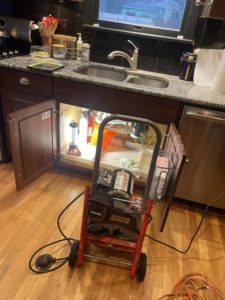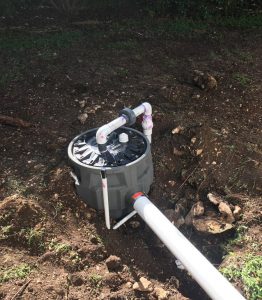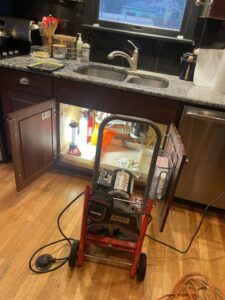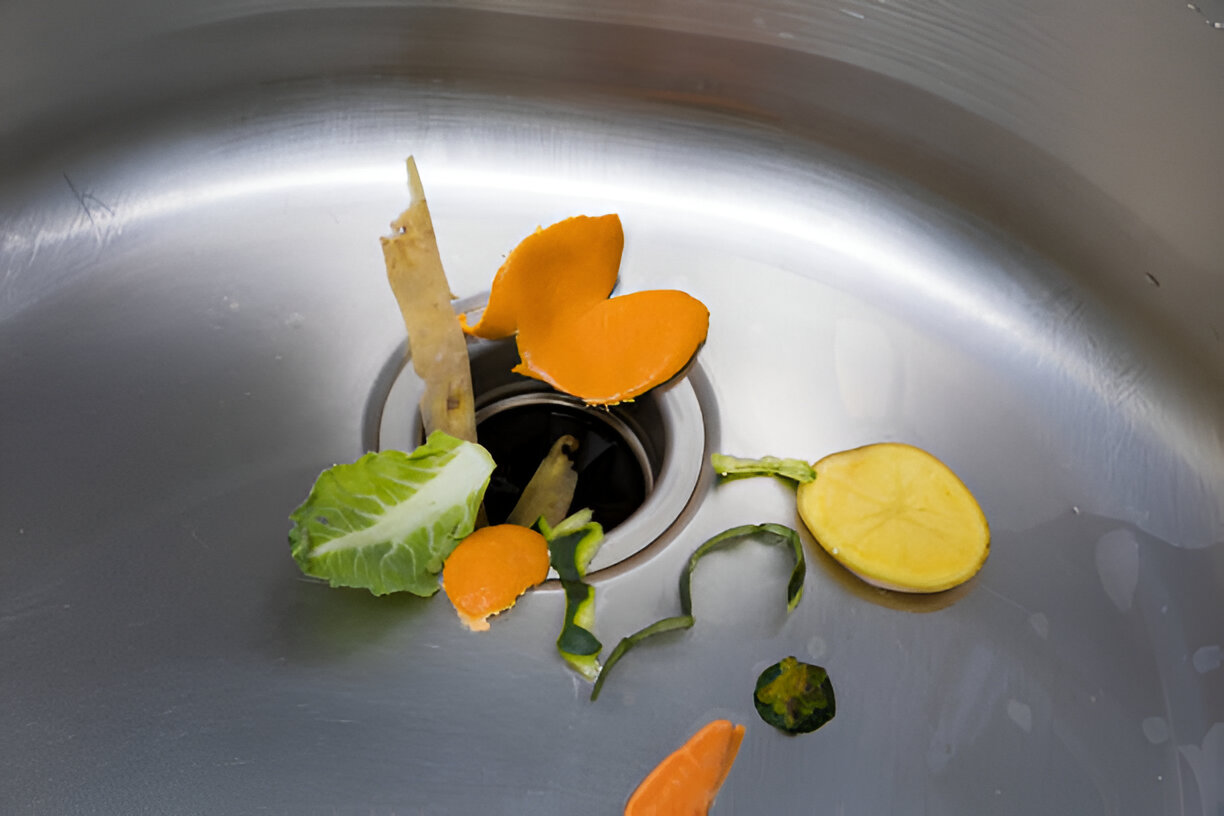Water heater maintaining is crucial for its longevity and efficiency. Regular water heater maintenance prevents common issues like sediment build-up, which can affect your unit’s performance. Sediment accumulation leads to reduced efficiency, higher energy costs, and potentially costly damage.
In this article, you will learn:
- Why regular draining is essential
- How to identify when it’s time to drain your water heater
- Safety precautions to take before starting
- A detailed, step-by-step guide on the draining process
- Tips for ongoing maintenance
By following these guidelines, you can ensure your water heater operates efficiently, saving you money and extending the lifespan of your unit.
Why You Should Drain Your Water Heater Regularly
Sediment accumulation can significantly impact your water heater’s efficiency and performance. Over time, minerals and debris settle at the bottom of the tank, forming a thick layer that insulates the water from the heating element. This makes it harder for your heater to warm the water, reducing its overall efficiency.
The Benefits of Regularly Draining Your Water Heater
- Increased energy costs: A neglected water heater with sediment buildup requires more energy to heat the same amount of water. The heating element must work harder and longer, leading to higher utility bills. Regular draining helps maintain optimal energy consumption.
- Preventative maintenance for longevity: Regularly draining your unit is crucial for extending its lifespan. Sediment buildup can cause corrosion and damage to the tank, leading to costly repairs or replacements. Preventative maintenance ensures your heater remains in good working condition, providing reliable hot water when you need it.
Regular upkeep is key to avoiding these issues, ensuring your water heater operates efficiently and economically.
Signs That Indicate It’s Time to Drain Your Water Heater
Knowing when to drain your water heater can save you time and money. Here are key signs to watch for:
- Increased Energy Bills: If your energy costs rise without an increase in usage, sediment build-up at the bottom of your tank could be forcing the heater to work harder.
- Hot Water Running Out Quickly: This often indicates that sediment is occupying space in the tank, reducing its capacity to hold hot water.
- Rusty or Foul-Smelling Hot Water: Rusty water can signal corrosion inside the tank, while foul odors could indicate bacterial growth due to stagnant water.
- Strange Noises During Operation: Banging or popping sounds usually result from hardened sediment interfering with heating elements or trapped air pockets bursting.
Pay attention to these signs. Addressing them promptly by draining your water heater can prevent more serious issues down the line.
Safety Precautions Before Draining Your Water Heater
Ensuring safety is paramount when you’re draining your water heater. Here are some important precautions to take:
- Turn Off Power and Gas Supply: Before starting the process, make sure to turn off the power and gas supply. For electric heaters, switch off the power at the circuit breaker. For gas heaters, turn off the gas supply valve.
- Shut Off Cold Water Supply Valve: Locate and shut off the cold water supply valve, usually found above the water heater. This prevents additional water from entering the tank during draining.
- Wait for Tank to Cool Down: Hot water can cause severe burns, so it’s recommended to wait for the tank to cool down safely before proceeding with draining.
- Open Hot Water Faucet: Opening a hot water faucet in your home helps relieve any built-up pressure in the system and prevents air vacuum formation.
By following these safety measures, you can ensure a smooth and hazard-free maintenance procedure while draining your water heater.
Step-by-Step Guide to Draining Your Water Heater
1. Turn Off Power and Water Supply
Electric Water Heater:
- Locate your circuit breaker panel.
- Identify the switch corresponding to your water heater.
- Flip the switch to the “off” position to cut off power supply.
Gas Water Heater:
- Find the gas supply valve, typically located near the bottom of the unit.
- Turn the valve clockwise to shut off the gas flow.
Shut Off Cold Water Supply Valve:
- Locate the cold water supply valve at the top of your water heater.
- Turn this valve clockwise until it stops, effectively shutting off the cold water entering the tank.
Ensuring both power and water supplies are turned off is crucial for safety and efficiency when draining your hot water heater tank.
2. Allow Time to Cool Down Safely
Waiting for your water heater to cool down is crucial to avoid burns and ensure safe handling of the tank. After turning off the power or gas supply and shutting the cold water shut-off valve, allow several hours for the water inside to reach a safe temperature. This cooling period is essential whether you’re dealing with an electric water heater or a gas water heater. Draining a hot water heater tank without proper cooling can lead to severe injuries, making this step non-negotiable in the draining process.
3. Connect a Hose to the Drain Valve
Properly connecting a garden hose to the drain valve is crucial for safely draining your water heater tank. Follow these steps:
- Locate the Drain Valve: Typically found at the bottom of the water heater.
- Attach the Hose: Securely connect one end of a garden hose to the drain valve. Ensure there are no leaks at the connection point.
- Direct the Hose: Position the other end of the hose into a bucket or route it outside to avoid water damage inside your home.
This simple setup helps manage water flow efficiently, whether you have an electric or gas water heater.
4. Open Hot Water Faucets to Prevent Air Vacuum Formation
Opening hot water faucets in your home is a crucial step when you drain a hot water heater tank. This action allows air to enter the system, preventing an air vacuum from forming.
Why It’s Necessary
When draining an electric or gas water heater, the absence of air circulation can create a vacuum, hindering the drainage process.
How to Do It
Simply turn on one or two hot water faucets. This will facilitate smooth water flow from the tank, ensuring efficient sediment removal.
This step is essential for maintaining proper system pressure and ensuring a smooth drainage process.

5. Open Drain Valve Carefully and Monitor Water Flow
After ensuring the hot water faucets are open, it’s time to carefully open the drain valve on your water heater tank. For both electric and gas water heaters, locate the drain valve at the bottom of the unit. Attach a garden hose securely to the valve, directing it into a bucket or outside.
Steps:
- Open the Drain Valve: Turn the valve counterclockwise slowly to start draining.
- Monitor Water Flow: Watch the flow of water closely. Clear water indicates minimal sediment, while cloudy or dirty water suggests significant sediment buildup.
This simple yet crucial step helps maintain your heater’s efficiency and longevity.
6. Flush Sediment by Manipulating Cold Water Supply if Necessary
To ensure your water heater tank is thoroughly cleaned, you may need to flush out lingering sediment. Here’s how:
- Briefly turn on the cold water supply valve: This helps stir up and dislodge any remaining sediment at the bottom of the tank.
- Observe the clarity of the drained water: Continue flushing until the water runs clear.
This technique ensures that your electric or gas water heater operates efficiently by removing built-up sediment. Regularly performing this task can prolong the lifespan of your unit and maintain optimal performance.
7. Close Drain Valve Once Done Flushing Sediment
Once the water runs clear, it’s time to close the drain valve. Follow these steps:
- Turn off the cold water supply: Temporarily halt any water flow into the tank.
- Remove the garden hose: Disconnect it from the drain valve.
- Close the drain valve securely: Ensure it’s tightly shut to prevent leaks.
After closing the drain valve, reopen the cold water supply to refill your tank. This step is crucial for both electric and gas water heaters, ensuring they resume normal operation without air pockets.
8. Restore Power/Gas Supply After Completing The Process
Restoring the power or gas supply to your water heater is crucial after you’ve drained the tank. For electric water heaters:
- Turn on the power at the circuit breaker.
For gas water heaters:
- Relight the pilot light following the manufacturer’s instructions.
- Ensure all controls are set to their proper positions.
Double-check that the shut-off valve is open and that everything is securely in place. This ensures your unit operates efficiently and safely.
Pro Tip: Always consult your water heater’s manual for specific instructions related to your model.
9. Check for Any Leaks Around The Drain Valve After Draining
It’s important to check for leaks after you drain the hot water heater tank. Once you’ve filled the tank again and turned on the power or gas supply, take a close look around the drain valve for any signs of leakage. Here’s what to look out for:
- Water pooling underneath the unit.
- Moisture or drips around the drain valve.
Make sure that the shut-off valve is tightly closed and that all connections are secure. Even a small leak can cause serious water damage or make your electric or gas water heater work less efficiently over time.
Maintenance Tips To Keep Your Water Heater Running Efficiently Over Time
Regular maintenance ensures your water heater runs efficiently and has a longer lifespan. Here are essential tips:
1. Draining Frequency Recommendation
The frequency at which you should drain your water heater depends on the hardness of your local water. In areas with hard water, draining every six months is advisable. For softer water regions, an annual draining might suffice.
2. Anode Rod Replacement Importance
The anode rod is crucial in preventing corrosion inside the tank. Check the condition of the anode rod every three to five years and replace it if it’s heavily corroded. This simple step can significantly extend the life of your water heater.
Regular attention to these tasks can prevent many common issues and ensure your water heater operates at peak efficiency.
Conclusion: Prolong The Lifespan And Efficiency Of Your Unit By Adopting Preventive Measures!
Regular maintenance of your water heater is crucial for maximizing its performance and lifespan. By performing tasks such as draining the tank annually and monitoring the condition of anode rods, you can prevent sediment buildup and corrosion. This not only ensures that your unit operates efficiently but also helps avoid unexpected breakdowns.
Key Benefits of Regular Maintenance:
- Enhanced Efficiency: Removing sediment allows the heater to function more effectively, reducing energy consumption.
- Cost Savings: A well-maintained unit consumes less energy, leading to lower utility bills.
- Extended Lifespan: Preventative measures reduce wear and tear, prolonging the life of your water heater.
Taking these simple steps can make a significant difference. Draining your water heater might seem like a daunting task, but following the step-by-step guide provided can make it manageable. Regularly inspecting components like the anode rod further safeguards against potential issues.
By incorporating these practices into your routine, you ensure that your water heater remains reliable and efficient, providing consistent hot water for years to come.









